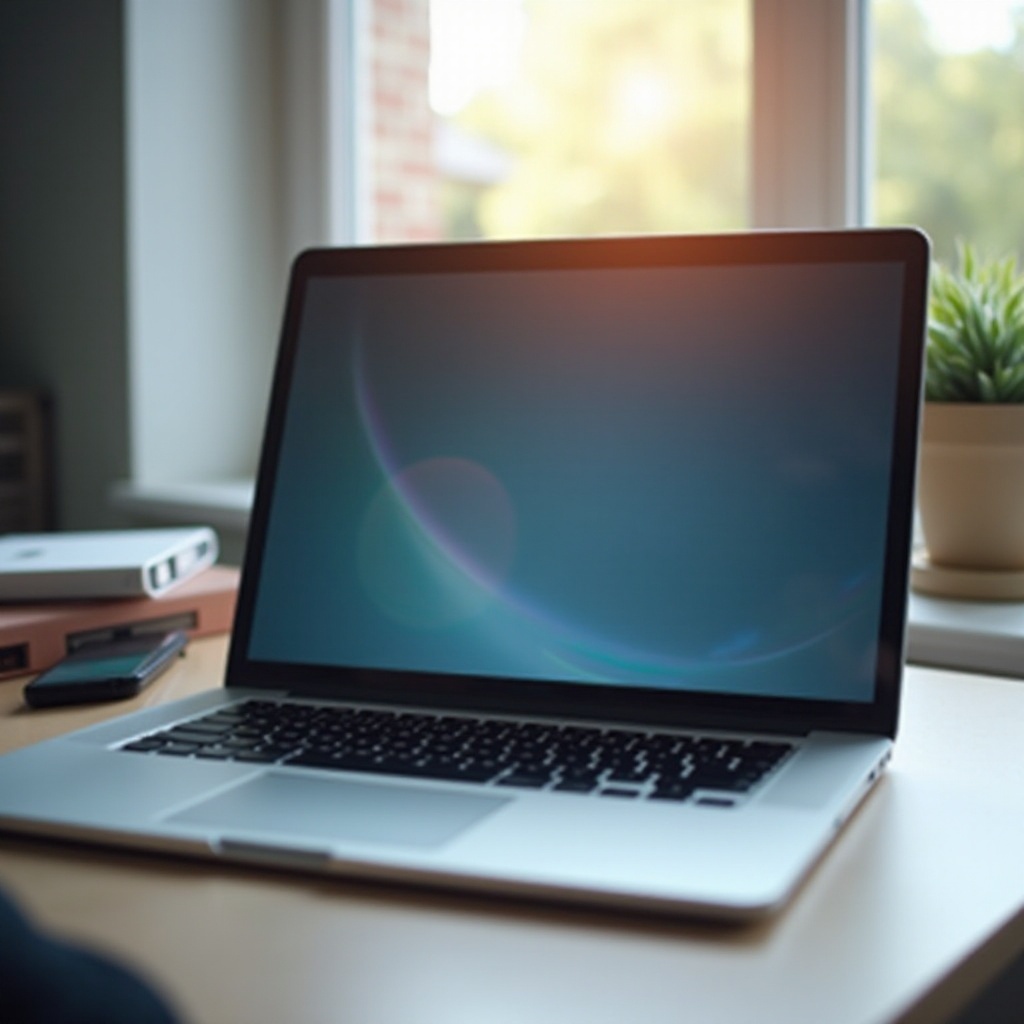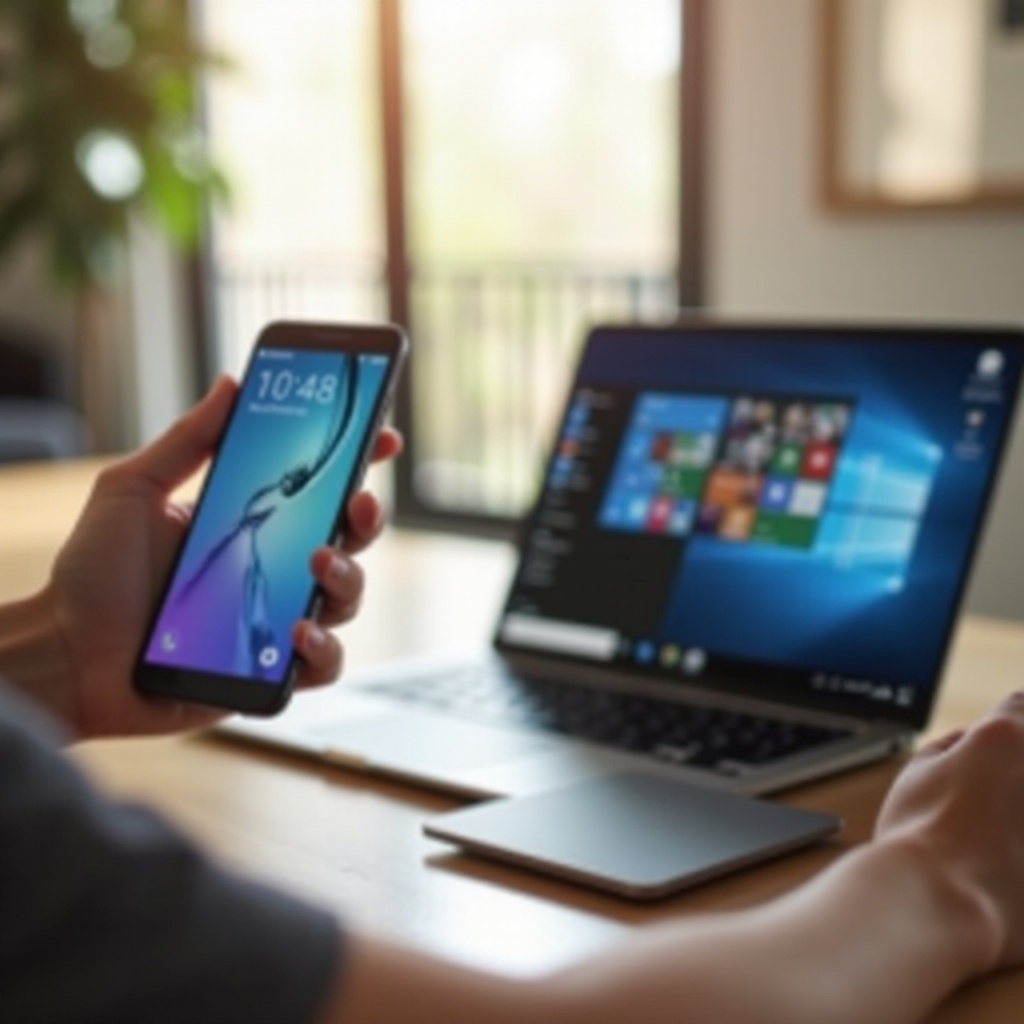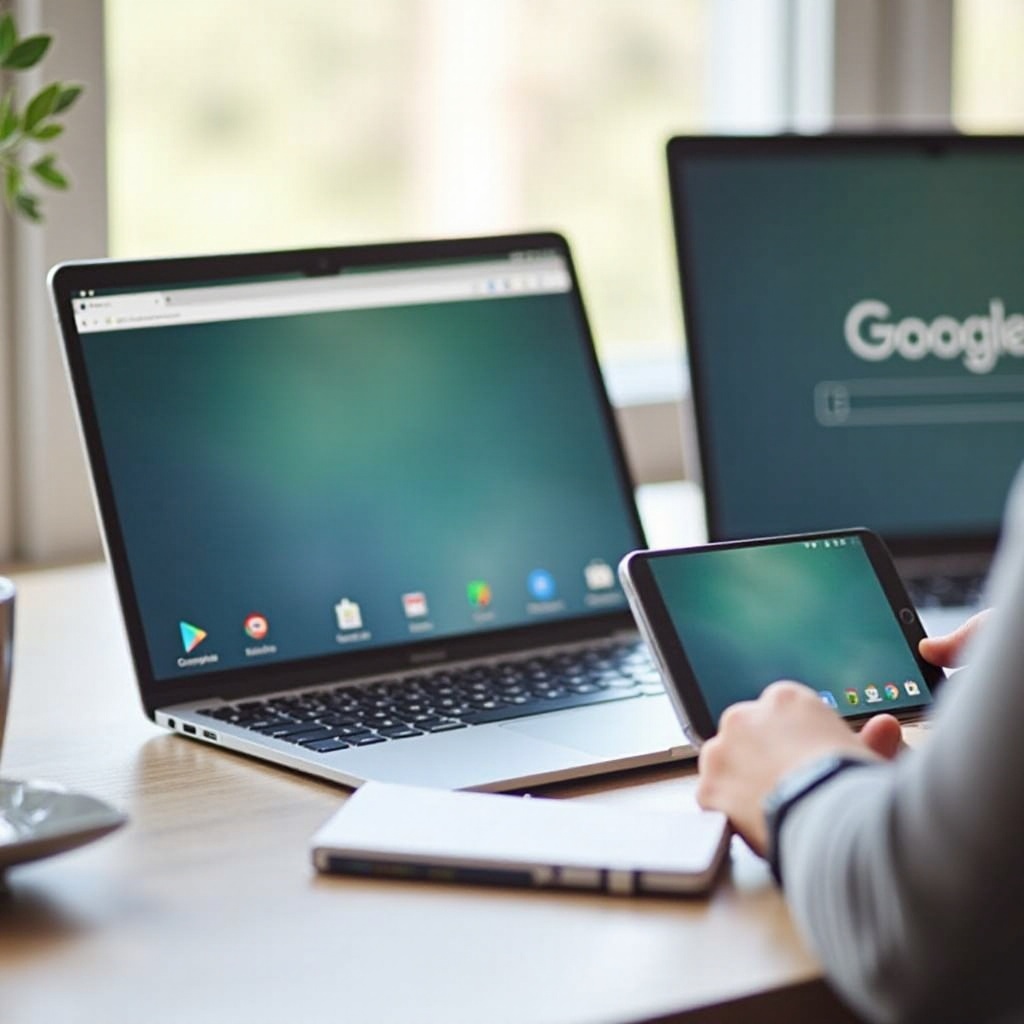Introduction
Casting your Android phone to your Chromebook can streamline your digital interaction by allowing you to display your mobile content on a larger screen. Whether you want to show photos, videos, or presentations, casting can simplify various tasks and enhance your overall experience. This guide will walk you through the steps to set up and start casting your Android phone to your Chromebook, provide troubleshooting tips, and explore third-party applications for an optimized user experience.

Prerequisites for Casting
Before diving into the setup process, ensure you have the necessary prerequisites. Firstly, both your Android phone and Chromebook should support casting features. You’ll need a stable Wi-Fi connection for seamless streaming. Both devices should be connected to the same network to facilitate communication between them. Also, make sure your Chromebook has the latest Chrome OS update installed. Finally, verify that your Android phone runs on version 5.0 (Lollipop) or higher, as earlier versions might not support casting features.
Once you have confirmed that your devices meet these prerequisites, proceed to set up both to enable a smooth transition to casting.

Setting Up Your Devices
Once you’ve checked the prerequisites, it’s time to set up your devices. On your Chromebook, ensure the operating system is up-to-date by going to ‘Settings’ > ‘About Chrome OS’ and checking for updates. On your Android phone, navigate to ‘Settings’ > ‘Connected devices’ > ‘Connection preferences’ and enable ‘Cast.’ It’s important to ensure both devices have Bluetooth enabled if prompted. Setting up these essential elements sets the stage for successful casting.
Step-by-Step Guide to Casting
Once both devices are set up, follow these steps to cast your Android phone to your Chromebook:
- On your Android phone, pull down the notification shade and tap on the ‘Screen cast’ option.
- A list of available devices will appear. Select your Chromebook from the list.
- A prompt will appear on your Chromebook asking for permission to connect. Click ‘Accept.
- Your Android phone screen will begin mirroring on your Chromebook. You can now navigate your phone, and the actions will be displayed on the larger screen.
- To stop casting, pull down the notification shade on your Android phone again and tap the ‘Screen cast’ button. Select ‘Disconnect’ from the list of casting options.
This sequence of steps ensures that your casting experience is seamless and efficient.
Using Third-Party Applications
In some cases, your devices might not support native casting features, or you may require additional functionalities. Third-party applications like ‘Vysor,’ ‘AirDroid,’ and ‘Reflector’ can be handy tools. These apps offer more advanced features and can bypass some native limitations. For example, Vysor provides both free and premium versions, including features like high-quality mirroring and wireless connections. Download and install the chosen app, follow the specific setup instructions provided, and enjoy casting with enhanced options.
Troubleshooting Common Issues
Casting can sometimes encounter hurdles. If your Chromebook doesn’t detect your Android phone, ensure both devices are on the same network and casting is enabled on your phone. Restart both devices if needed. If the connection drops frequently, check your Wi-Fi stability and consider reducing interference by minimizing other network-intensive activities. Updating both your Android and Chrome OS software to the latest versions can also resolve compatibility issues.
These troubleshooting steps can help resolve common casting issues and ensure a steady connection.
Tips for an Improved Casting Experience
To optimize your casting experience, keep these tips in mind:
– Ensure a strong and stable Wi-Fi connection for low latency.
– Close unnecessary applications on both devices to free up resources.
– Enable ‘Do Not Disturb’ mode on your phone to avoid interruptions during casting.
Adopting these best practices will enhance the overall quality of your casting experience.
Additional Use Cases and Applications
Casting your Android phone to your Chromebook isn’t limited to just streaming media; it can enhance productivity and entertainment. Use your Chromebook as a larger display for mobile gaming, or effortlessly present documents and slides in meetings. Educational applications can also benefit from this feature, providing an interactive learning experience by displaying educational apps and tools on a larger screen. The versatility of casting extends far beyond simple media sharing.

Conclusion
Casting your Android phone to your Chromebook is a straightforward process with numerous benefits. By following the steps outlined in this guide, you can enjoy a more seamless interaction between your devices. Whether for work, education, or entertainment, casting can significantly enhance your digital experience.
Frequently Asked Questions
What should I do if my Chromebook doesn’t detect my Android phone?
First, ensure both devices are connected to the same Wi-Fi network and that casting is enabled on your phone. Restart both devices and try again. If the issue persists, check for software updates on both devices.
Are there any limitations to casting from an Android phone to a Chromebook?
Yes, some limitations include potential lag or latency, dependency on Wi-Fi strength, and occasional compatibility issues with certain apps. Using third-party apps can help overcome some of these limitations.
Can I use a USB connection to cast my Android phone to my Chromebook?
While the casting process generally relies on Wi-Fi, some third-party applications like Vysor allow screen mirroring via USB for a more stable connection and lower latency.
